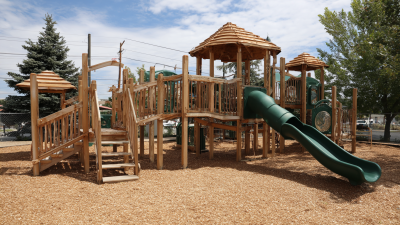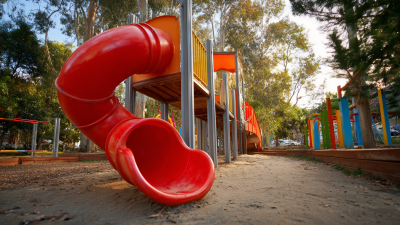 +86-13901441113
+86-13901441113




Creating a safe and enjoyable playground in the park is essential for fostering community engagement and promoting physical activity among children and families. According to the National Association for the Education of Young Children, outdoor play is crucial for children's overall development, yet nearly one in four children in the U.S. do not have access to safe play spaces. Moreover, the Centers for Disease Control and Prevention (CDC) highlights that access to recreational facilities, such as playgrounds, is linked to increased physical activity levels, with children more likely to engage in exercise when safe environments are present.

Therefore, designing an inclusive and well-maintained playground in the park not only supports children's physical health but also encourages social interaction, creativity, and emotional well-being. This guide will explore effective strategies to create such inclusive play spaces that cater to all community members.
Choosing the right location for a playground is crucial to ensuring that it serves the needs of the community effectively. First, it's important to consider accessibility. The playground should be situated in an area that is easily reachable for families, ideally close to walking paths, public transport, and parking facilities. Additionally, ensuring that the site is in a low-traffic area can enhance safety and encourage more visits.
Another key factor is the proximity to other amenities, such as restrooms, picnic areas, or sports fields. A location that supports complementary activities can create a more enjoyable environment for families. Furthermore, choosing a spot with natural shade from trees or built features can provide relief from the sun during play, making the playground a more comfortable place to spend time. Overall, thoughtful consideration of location will help create a playground that is not only safe but also inviting, promoting healthy activity and social interaction among children and families in the park.
 Creating a playground that caters to all age groups involves thoughtful design that balances safety, accessibility, and engagement. For young children, play areas should include scaled-down equipment such as low slides, gentle swings, and soft landing surfaces to minimize the risk of injury. Additionally, incorporating sensory-rich features like textured paths, interactive panels, and water play can stimulate play for toddlers and preschoolers, encouraging exploration and development in a safe environment.
Creating a playground that caters to all age groups involves thoughtful design that balances safety, accessibility, and engagement. For young children, play areas should include scaled-down equipment such as low slides, gentle swings, and soft landing surfaces to minimize the risk of injury. Additionally, incorporating sensory-rich features like textured paths, interactive panels, and water play can stimulate play for toddlers and preschoolers, encouraging exploration and development in a safe environment.
For older children and teenagers, more challenging equipment, like climbing structures and obstacle courses, can enhance physical activity while promoting social engagement. It’s important to ensure these areas are separated from younger children's spaces to prevent accidents, but still facilitate interaction where appropriate. Incorporating seating areas and shaded spots for caregivers enhances the overall experience, making the playground inviting for families of all ages. By blending equipment suitable for different age brackets and creating an inclusive environment, parks can offer a safe and fun oasis that encourages community gathering and universal play.
When selecting playground equipment for a park, safety and durability should be top priorities. It's essential to choose materials that can withstand various weather conditions and heavy usage. Look for equipment made from high-quality materials that offer rust resistance and UV protection to ensure a long lifespan. Equipment such as stainless steel slides and heavy-duty swings are great options.
**Tips:** Always check for safety ratings and certifications before making a purchase. Additionally, consider equipment with smooth edges and rounded corners to minimize the risk of injury. Regular maintenance checks will also help in identifying potential hazards and prolonging the equipment's life.
Moreover, incorporating a variety of play structures can cater to children of different ages and abilities. Whether it's climbing walls, slides, or balance beams, a diverse selection encourages imaginative play and physical activity. Choose equipment that promotes interactive play and engages children in social interaction, enhancing their overall experience at the park.
**Tips:** Ensure that there is proper fall surfacing, such as rubber mulch or foam mats, beneath play structures, which can reduce injury risks from falls. Additionally, if possible, involve the community in the selection process to better address the needs of local families.
| Equipment Type | Material | Safety Rating | Age Range | Maintenance Frequency |
|---|---|---|---|---|
| Swings | Steel Frame, Plastic Seats | ASTM Certified | 2-12 years | Monthly |
| Slide | Plastic | CPSC Approved | 2-10 years | Bi-Annual |
| Climbing Structure | Metal and Rope | EN1176 Compliant | 5-12 years | Quarterly |
| See-Saw | Wood and Metal | ANSI Approved | 3-10 years | Monthly |
| Sandbox | Wood Frame, Natural Sand | CPSC Approved | 1-6 years | Weekly |
Creating a safe and enjoyable playground involves prioritizing safety features and establishing regular maintenance protocols. First and foremost, the playground design should incorporate age-appropriate equipment that meets safety standards. Common safety features include soft surfacing materials like rubber mulch or foam padding to minimize the risk of injury from falls. Additionally, using rounded edges on play structures and ensuring proper spacing between equipment can greatly enhance child safety. Installing secure, clearly marked barriers can also help prevent children from straying into potentially hazardous areas.
Beyond initial design, ongoing maintenance is critical to sustain safety standards. Regular inspections should be scheduled to assess the condition of equipment, surfacing, and surrounding areas. Any damaged or worn components should be promptly repaired or replaced.
It is also essential to establish a routine cleaning protocol to remove debris and ensure that the playground remains inviting. Engaging the community in maintenance efforts, such as volunteer days or organized clean-ups, can foster a sense of ownership and encourage everyone to keep the playground safe and well-maintained for all users. By implementing these safety features and maintenance protocols, we can create a playground that is both fun and secure for children and their families.
Community involvement is crucial in the playground design process, as it ensures that the needs and preferences of local residents are met. Engaging the community begins with
hosting informational meetings where families can voice their ideas and concerns. These gatherings serve as a platform for brainstorming, allowing parents and children to express what features they would like to see—such as inclusive equipment, safety measures, or green spaces.
Collecting feedback helps foster a sense of ownership among community members, making them more likely to support and maintain the playground.
In addition to meetings, utilizing online surveys and social media can broaden the reach of community input. These digital tools allow for anonymous feedback, encouraging more honest suggestions regarding playground design. Furthermore, organizing workshops where community members can sketch their concepts or participate in mock designs can lead to innovative ideas that might not emerge in traditional meetings. By prioritizing community feedback, the playground can become a vibrant space that caters to the diverse interests of its users, promoting both fun and safety for children of all ages.






